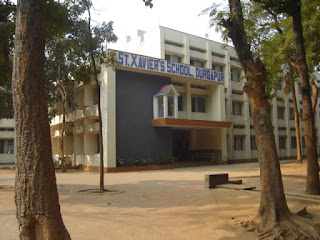Economic Conundrum - Sri Lanka
2018-19 was one of the best years in Sri Lanka modern history. Tourism was booming and the country was finally able to leave behind its tumultuous “war” past and making its mark in the world. April, 2019 changed all that. There were whispers and reports of radicalization in country and it manifested its ugly head during Easter celebrations when bombs ripped through Colombo. The country showed fortitude and eventually & around October / November 2019 was surely on the path of recovery; and then CoVID struck. Life came to a standstill and since then it has been a struggle for survival for this lovely yet vulnerable island nation.
Will try and outline the reasons, which in my opinion has led to this economic crisis.
- The high dependence on “debt” to fuel economic growth always comes with significant risks; the debt which fuelled projects and infrastructure, if fail to generate projected revenues will lead to disaster. Quality of Projects implemented - cannot comment on that - however, this CoVID scenario meant that revenues wasn’t generated - leading to the current scenario wherein GoSL have to service the high debt (seemingly 105–106% of GDP!) and there aren’t much of revenues. Reports suggests that China coerced GoSL to extend lease of Hambantota Port (in all important South East Asia - Africa - Europe Maritime route) for 99years!
- When a country depends heavily on imports - which implies high forex outgo - generation of forex is the key. While few countries in the Middle East manages with the control over petroleum or say a Singapore which has established itself as a hub of commercial trade and maritime logistics or even Bangladesh which is fuelling its economy with textile / garments industry and a high labour intensive population - Sri Lanka depended on Textile, Tea and Tourism. Now unfortunately, with world economic recession, certain GoSL policies (organic fertilizer fiasco) and the CoVID scenario implied all the sectors were impaired to a great extent. Huge reduction in inward cash flows has aggravated the problem.
- GoSL has taken the stance of controlling inflation by pegging the exchange rate - it has led to the scenario wherein SL workers who have migrated abroad are not interested to repatriate forex in the country through legal channels. It has a significant contribution of approx 10% of GDP! Also adhoc policies implemented for ensuring forex liquidity in system - like exports proceeds (partially) to be converted to LKR etc. has also created an atmosphere wherein exporters are also finding ways & means to avoid bringing forex in the country. This is a “catch 22″ situation with no easy answers.
- GoSL has decided not to default on scheduled debt service repayment - while it will ensure that credit ratings do not plummet further - it also extracts a substantial portion from the foreign reserves of the country. Many experts feel that it’s not the correct way to manage the situation, as the huge outflow of forex will further impair the economy. As on date (Feb 21, 2022), GoSL has also not approached IMF for help - whether it’s a correct decision or not, time will tell.
Steps have been taken by GoSL,
infact there’ve been so many steps taken, one fails to keep track - however,
sometimes I do get the feeling that there’s a certain incohesion amongst the
people in power - which reflects in the policies & actions. Time will be
the judge though.
In the ground, the population are affected on account of the high inflation (especially food items), and the constant media reports on the dire situation of fuel reserves / regular goods in the country. The only light in the tunnel is the revival of Tourism in a big way - wherein tourists from Russia, UK, India and European countries are pouring in to enjoy the pristine landscape of the country.




Comments
Post a Comment